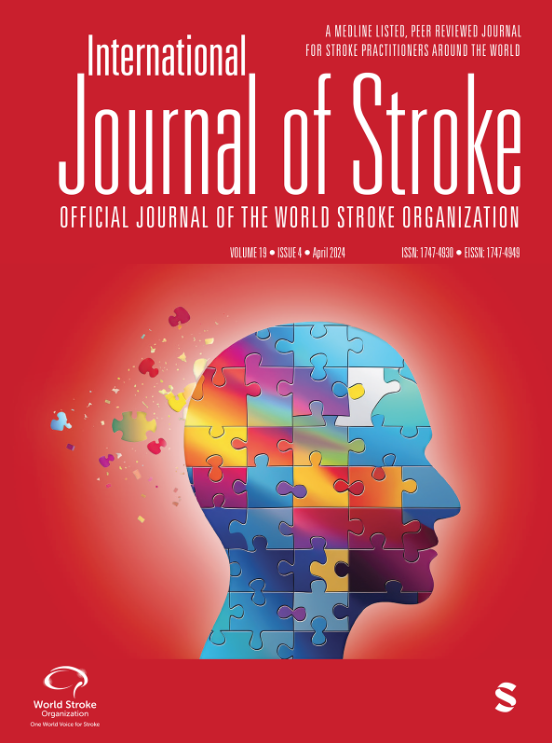性、性别与中风康复:加拿大和欧洲幸存者的功能限制和住院护理需求。
IF 6.3
2区 医学
Q1 CLINICAL NEUROLOGY
引用次数: 0
摘要
背景脑卒中是导致幸存者长期残疾的主要原因。过去的文献已经研究了中风结局中的生理性别差异,但有关性别差异的研究仍然有限。因此,本研究旨在调查欧洲和加拿大中风幸存者的生理性别和社会文化性别是否对残疾和生活质量起决定作用。方法数据收集自欧洲健康信息调查(EHIS,n=316,333)和加拿大社区健康调查(CCHS,n=127,462)数据集。主要研究结果为残疾(通过评估日常生活活动(ADL)和工具性日常生活活动(iADL)的损伤情况进行评估)和住院护理需求(如住院或入住养老院)。多变量逻辑回归模型用于识别与结果独立相关的因素。为了进行跨国比较,我们进行了联合分析。数据根据特定国家的性别不平等指数(GII)进行了调整,得分越高,说明女性遭受的性别不平等越严重:女性幸存者在 iADL(OR=1.73,95% CI 1.53 - 1.96)和 ADL(OR=1.25,95% CI 1.09-1.44)方面的损伤更大,但住院护理需求并未相应增加。婚姻状况和收入水平等社会经济因素是残疾的重要预测因素,其中低收入和单身/离婚与较高的风险相关。性别的影响在 GII 较高的国家更为明显,这表明性别不平等对中风后遗症的影响。本文章由计算机程序翻译,如有差异,请以英文原文为准。
Sex, Gender, and Stroke Recovery: Functional Limitations and Inpatient Care Needs in Canadian and European Survivors.
BACKGROUND
Stroke is a leading cause of long-term disability among survivors. Past literature already investigated the biological sex differences in stroke outcome, still limited work on gender differences is published. Therefore, the study aimed at investigating whether biological sex and sociocultural gender of survivors play a role as determinants of disability and quality of life among stroke survivors across Europe and Canada.
METHODS
Data were gathered from the European Health Information Survey (EHIS, n=316,333) and Canadian Community Health Survey (CCHS, n=127,462) datasets. Main outcomes of interest were disability, assessed through evaluating the impairment of Activities of Daily Living (ADL) and Instrumental Activities of Daily Living (iADL), and inpatient care needs, such as hospitalization or institutionalization. Multivariate logistic regression models were utilized to identify factors independently associated with outcomes. Federated analysis was conducted for cross-country comparisons. Data were adjusted for the country-specific Gender Inequality Index (GII), with higher score corresponding to more gender inequality towards femalesResults: Female survivors showed greater impairments in iADL (OR=1.73, 95% CI 1.53 - 1.96) and ADL (OR=1.25, 95% CI 1.09-1.44), without a corresponding increase in inpatient care needs. Socioeconomic factors such as marital status and income level were significant predictors of disability, with low income and being single/divorced associated with higher risks. The impact of sex was more pronounced in countries with higher GII, indicating the influence of gender inequality on stroke outcomes.
INTERPRETATION
The findings highlight the significant impact of biological sex and gender-related social determinants on post-stroke disability, with female sex and unfavorable socioeconomic conditions being associated with worse outcomes.
求助全文
通过发布文献求助,成功后即可免费获取论文全文。
去求助
来源期刊

International Journal of Stroke
医学-外周血管病
CiteScore
13.90
自引率
6.00%
发文量
132
审稿时长
6-12 weeks
期刊介绍:
The International Journal of Stroke is a welcome addition to the international stroke journal landscape in that it concentrates on the clinical aspects of stroke with basic science contributions in areas of clinical interest. Reviews of current topics are broadly based to encompass not only recent advances of global interest but also those which may be more important in certain regions and the journal regularly features items of news interest from all parts of the world. To facilitate the international nature of the journal, our Associate Editors from Europe, Asia, North America and South America coordinate segments of the journal.
 求助内容:
求助内容: 应助结果提醒方式:
应助结果提醒方式:


